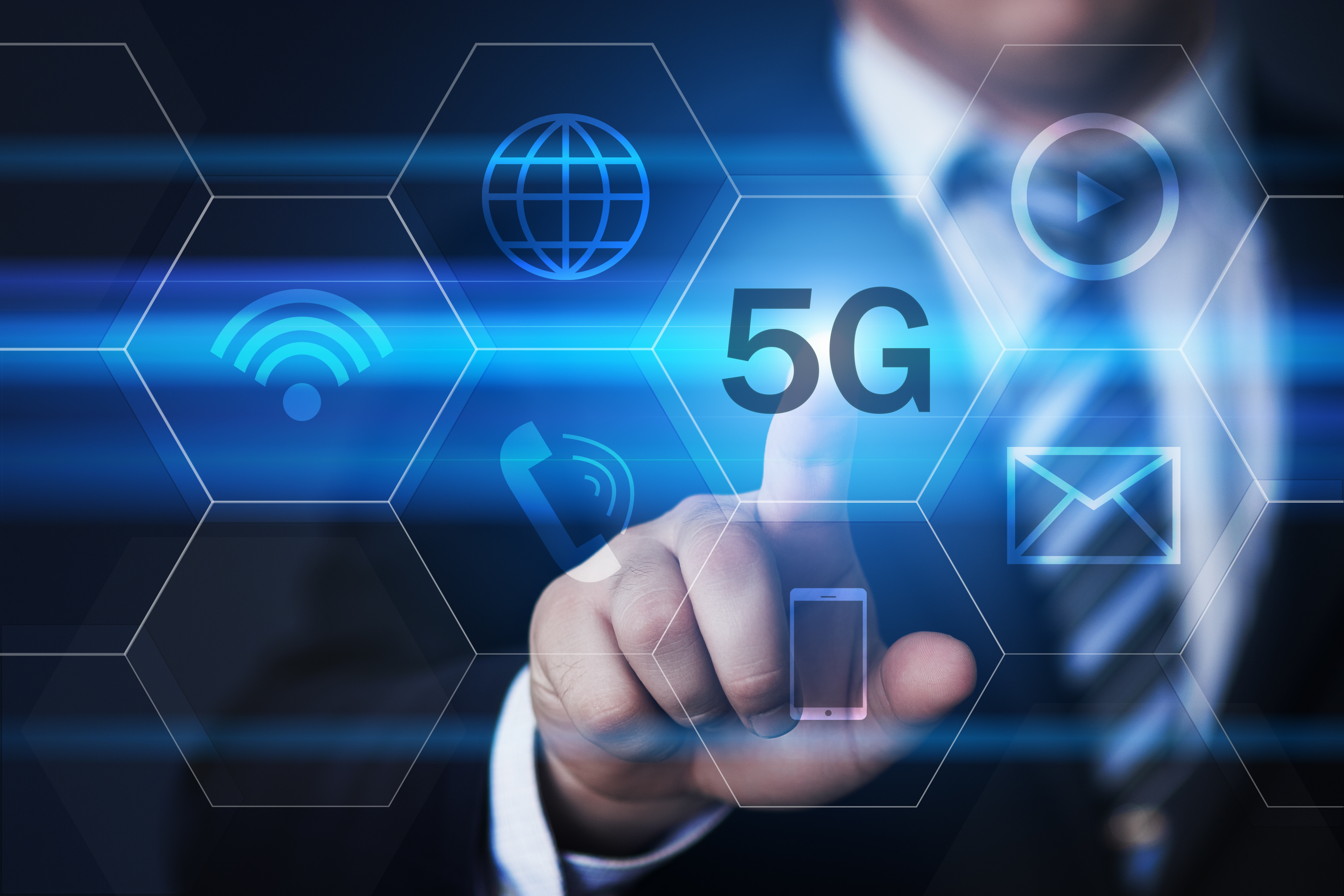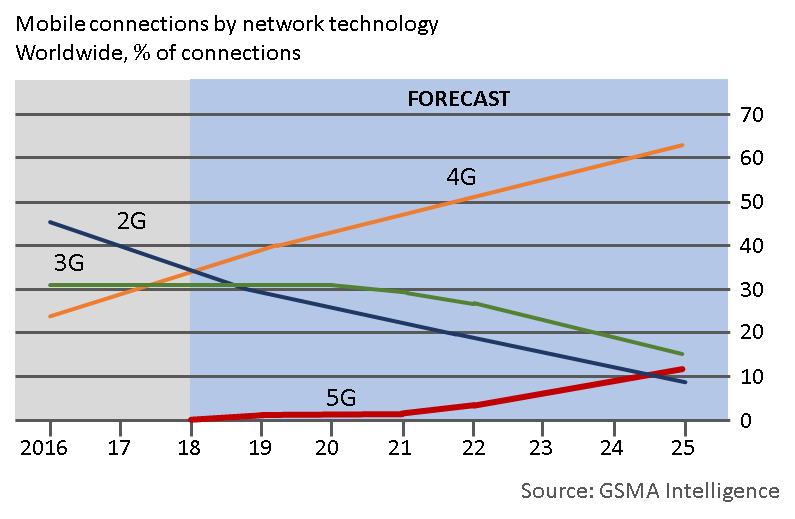
5G has undergone its first public trial during the Winter Olympics in Pyeongchang, South Korea and with Mobile World Congress (MWC) having taken place a few months ago, we have heard a lot about 5G recently.
But why does the world need 5G and how will it impact the symbiotic worlds of Advertising and Publishing?
This brief post provides an overview of the business and commercial rationale behind 5G for MNOs and summarises the impact for AdTech and Publishers whilst providing practical guidance on preparation. The more headline-grabbing stuff around driverless cars, drones, smart cities, and the Internet of Things isn’t included.
What is 5G?
5th generation mobile (5G) is still an engineering work in progress aiming to deliver the following goals:
1. Cost Savings – lower Mobile Network Operators (MNOs) transmission costs per gigabyte (GB) of data compared to 4G / LTE
2. Lower Latency sub-millisecond end-to-end network connectivity
3. Massive Density – x1000 more devices per geographic area compared to 4G / LTE
4. Faster – x10 the bandwidth of 4G / LTE means theoretically a full HD video can be downloaded in 1 second (I’ll believe that when I see it)
Standards are still being formed and ultimately MNOs will need to decide when and how to invest in the technology. They’re only going to make this investment when there’s a clear commercial case. As consumers are unlikely to pay more for 5G alone MNOs have two routes to justify the investment.
One route is to lower operating costs by transferring a GB of data at a significantly lower cost than existing solutions do. This requires significant upfront investment because sufficient 5G handsets need to be in consumers’ hands, with sufficient cellular network infrastructure to support them. Handsets need to be subsidised and network equipment deployed. This all takes time and vast capital investment and it only makes sense in areas of high population density.
The GSMA (industry body for MNOs) forecast by 2025 that only 12% of the worlds data will be transferred over 5G.

However, there is another compelling option for MNOs and it is one which strikes at the heart of their commercial challenges. Partnerships.
Today the data being transferred from a mobile phone to a website or application travels over multiple physical networks. There’s the MNO’s radio network, their other infrastructure, the public internet and then the web site provider’s infrastructure.
When a design goal of sub-millisecond end-to-end connectivity is considered the radio network ceases to be the bottleneck. The public internet and the website owner’s setup become far more significant. To deliver the consumer benefits of instantly loading web pages the content or service needs to move electronically closer to the consumer.
The significance is not lost on MNOs wishing to justify 5G investment. They have an eye on content partnerships where revenue is shared with MNOs in return for moving the content closer to the consumer and providing a faster performing service than would otherwise be possible. Revenue can flow from advertising but also from subscriptions that are simple to setup and administer. Given that mobile is now such a significant medium on which to consume content and services, no publisher or AdTech business can ignore this change in MNOs thinking.
MNOs are at least as vexed as the AdTech and publishing industry by the rise of Facebook and Google. For MNOs 5G represents an opportunity to increase revenue through sharing agreements in return for improved quality of service.
Publishers with poor performing content today will be exposed by 5G. Any publisher lacking the capability to deliver personalised content instantly today will not be ready for 5G. Publishers relying on JavaScript, responsive web design alone, or too many 3rd parties will be compromised. Preparing for this 5G world needs to be at the very top of every CTO’s strategic agenda.
Revenue models will become more complex if publishers wish to benefit from the enhanced role MNOs will play in service delivery. If past experiences can be relied upon there will be a nervousness in embracing new technology and MNOs will be looking for flagship content partners. Now would be a good time for publishers to start engaging with MNOs to understand their intentions.
In theory, at least, MNOs have more first party personal data than anyone else and, importantly, permission to use it. MNOs have been slow to leverage the commercial benefit of this data. 5G provides a compelling reason to do so. Any AdTech company in the personal data business needs to understand the MNOs’ plan in the territories in which they operate. The MNOs, between them all, know about every person of significance.
Bandwidth and latency benefits of 5G bring significant advantages for advertising. Adverts will load faster, enabling richer video and interactive adverts to be served with confidence and more easily meeting viewability standards. But the AdTech ecosystem of servers, exchanges, SSPs, DSPs and DMPs needs to deliver faster performance. In a world where a customer can receive a response instantly, the programmatic auction will need to complete in a few milliseconds, not the 100’s of milliseconds as it does in practice today. The architecture of AdTech will need to evolve, abandoning the constraints of the status quo.
5G isn’t a tactical issue to be addressed in 2018 alongside header bidding, viewability or brand safety. It is however something to put on the strategic roadmap and to start preparing for. Here’s some questions every AdTech business and publisher should be asking:
1. Are we engaging or capable of engaging with MNOs? If not, shall we work with a 3rd party to syndicate our content instead? Do we want to be an early adopter? Who in the partner and content teams at MNOs should we be talking to?
2. Does our technology roadmap support faster performance and simpler deployment options? Is it flexible?
3. What design and structural changes must we make to our content to support the possibilities of faster and richer digital experiences?
4. Are we working with partners who understand the challenges and are prepared?
5G presents a clear opportunity for AdTech and publishers to address many systemic problems over a realistic timeframe. Prepare now to embrace the 5G opportunity in the early 2020s.